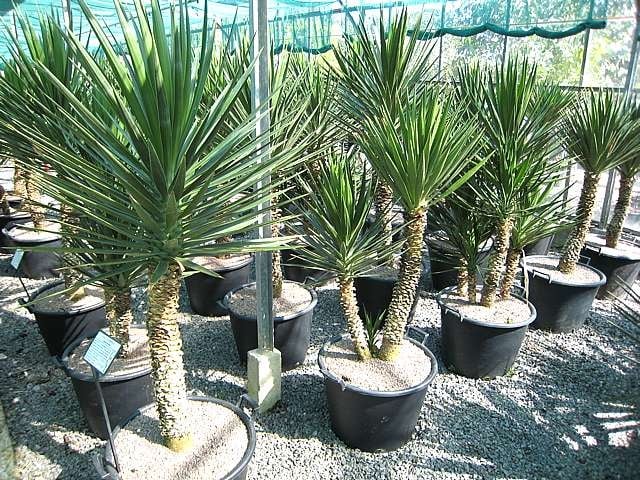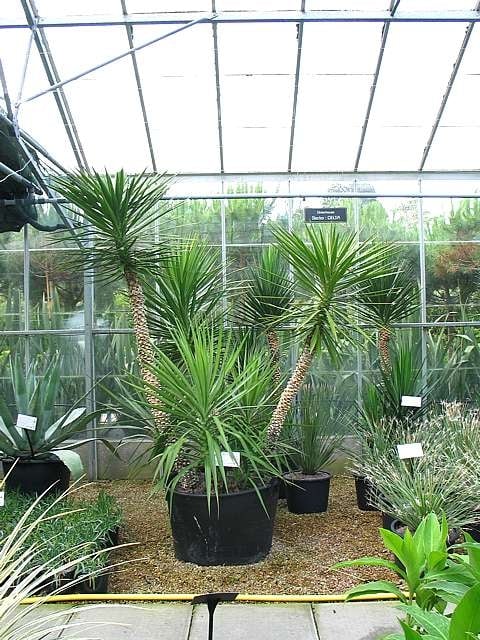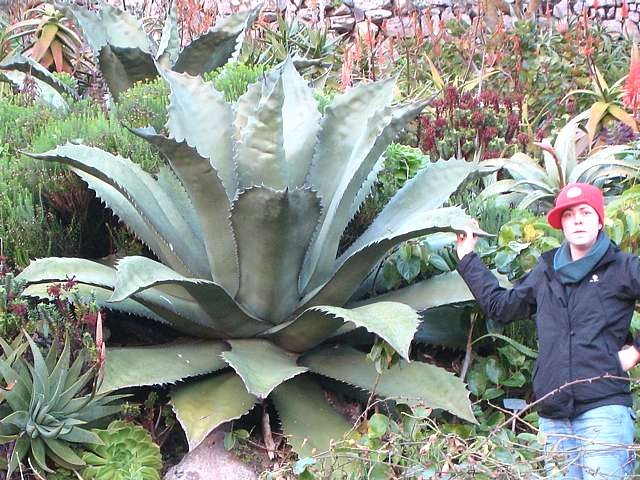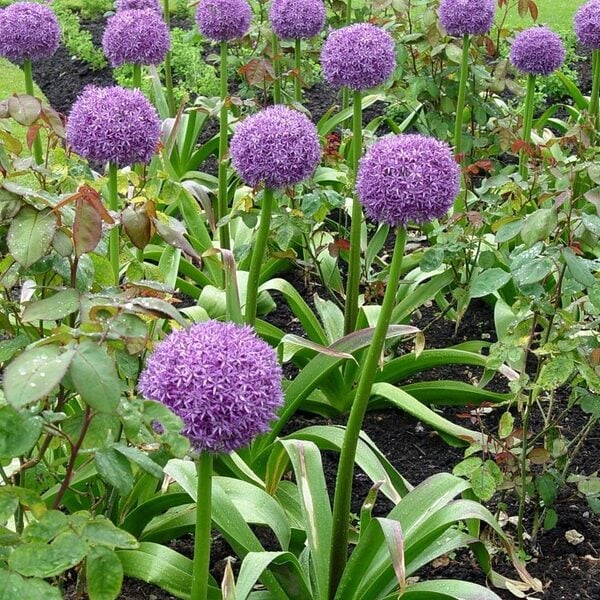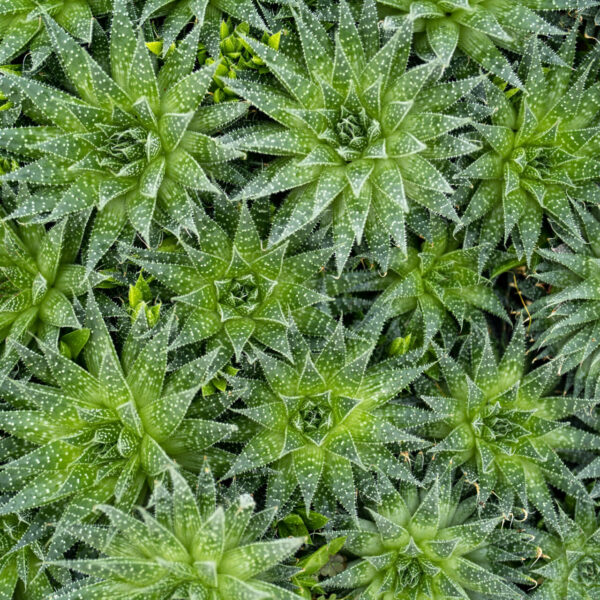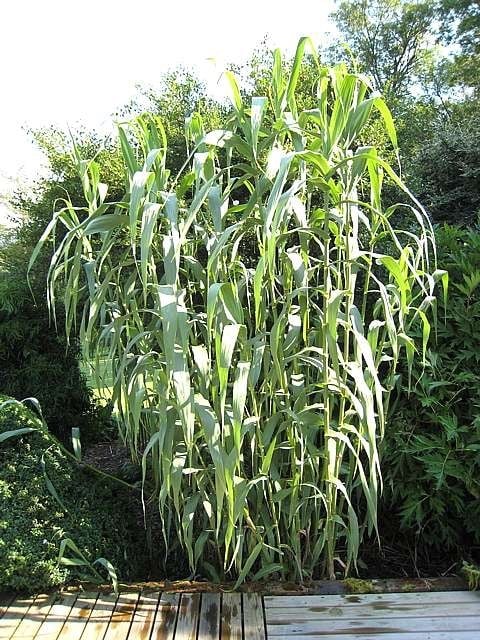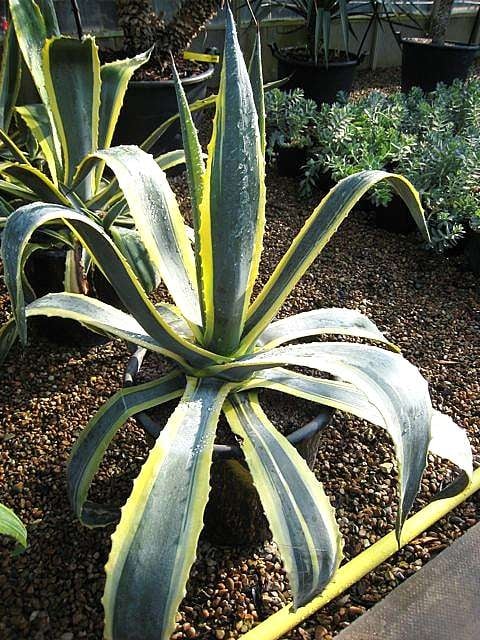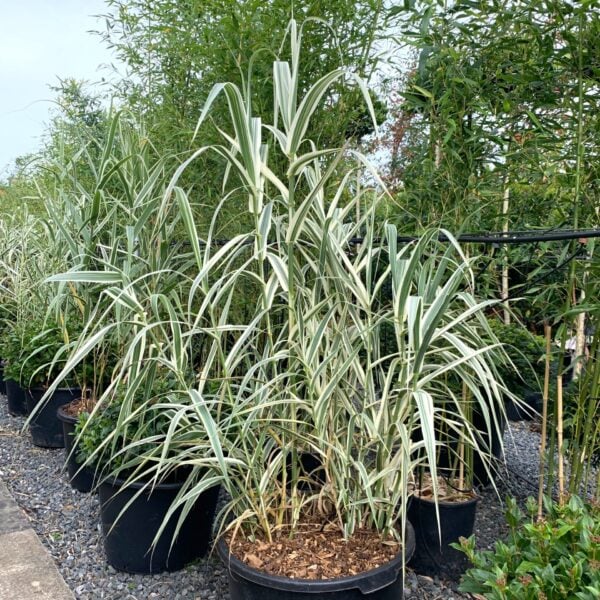Yucca aloifolia (Spanish Bayonet)
Pretty seems an odd word to describe the most viciously spiky plant on the nursery but it is. Beautifully organised horizontal spiky leaves on a 6ft trunk. Avoid strong winds. Please contact us for stock availability and sizes.

Hardiness level Green
Outrageously spiky but the overall look of these can only be described as pretty. Beautiful even. From a distance : fluffy. They look good in little groves of different sizes. They tend to sucker so you can easily end up with this look anyway. Removal of old, yellow and bent leaves is vital to maintain this prettiness. Without maintenance they will look nothing of the sort. Not good in windy sites. The leaves are not particularly flexible and once they're bent (they fold), they must be removed. They form a nice straight trunk and branch after flowering.
In common with all the yuccas we grow : remove old leaves (pull off or cut off, depending on your proclivities), use fungicide on them if they get spotty (this will stop the spot spreading not make the spots go away), they have large white flower spikes in late summer, they branch after flowering, remove the flower spike as soon as the flowers fade. Any reasonably well drained soil - they're not desert plants and are not as fussy as people often imagine.
These are from suckers from Italy. Native to the Carolinas, U.S.A.
Some notes about spotty leaves : some plants (this is one) are susceptible to getting black spots on their leaves. This is the growth of fungal organisms that land on the leaf and grow. They do no harm to the plant but they look unsightly. This spottiness only seems to afflict a small number of plants that have spent the last few million years evolving in a dry climate where airborne fungal spores are rare and therefore the plants have never had a reason to develop a way to combat the situation. The technique to combat these spots is a combination of fungicide (any will do - particularly anything recommended for roses) used when the spots appear and merely removing (and burning preferably) affected leaves. Leaf removal removes the source of infection, fungicide kills the spores (but doesn't make the spots go away).
N.B. When clipping several plants with the same tool, have a bucket containing a 5% bleach solution and swish your blades around for 30 seconds between plants to sterilise them. This will help avoid the chance of cross contamination of disease.
As with all woody plants, plant high, exposing as much of the taper at the base of the trunk as possible. Allowing soil to accumulate round the base of a tree can be fatal. Keep very well watered when first planted.
Additional Information |
|
|---|---|
| Soil Type | |
| Light | |
| Plant Type | |
| Continent of Origin | |
| Specialist Plants | |
| Features | |
| Situation | Coastal, Conservatories, Mild City Gardens, Plants for Pots, Sheltered Garden |
| Flower Colour | |
| Hardiness | |




